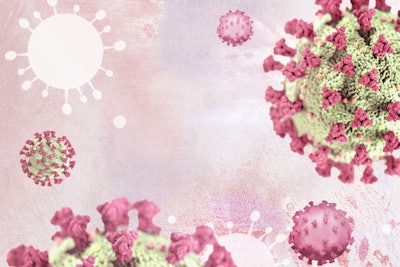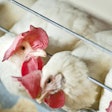
Shifts in consumer behavior may lessen the hit of stalled meat packing production, but the feed industry may be forever changed.
Despite the phased reopening of society and economies worldwide after the initial shutdown spurred by the novel coronavirus (COVID-19), the world is far from business as usual.
In the animal protein sector, analysts are seeing a “pandemic reset” mindset among consumers who are becoming “less transfixed on niche attributes.”
“We are hearing a lot less talk about former buzz trends like plant-based and much more focus on appreciating the fundamental-yet-immense value of simply having a resilient supply of high-quality, healthy, nutritious, cost-effective food — including high-protein, nutrition-rich poultry, swine and ruminant products,” said Sabrina Zettell, Canadian Bio-Systems Inc. nutrition and technical service manager.
As grocery meat cases fill and restaurants reopen for dine-in service, whether for comfort, preference or practicality, it’s likely the “pandemic reset” trend will carry on for the foreseeable future to support meat sales and the preparation of meals at home. According to Meagan Nelson, the associate director of the fresh growth and strategy team at Nielsen, consumer animal protein consumption trends will take anywhere from eight months to a year to return to pre-pandemic levels — and some behaviors may never go back.
But what may this mean for animal feed manufacturers through the balance of 2020 and beyond? Feed industry suppliers weigh in.
COVID-19’s impact on feed production
Despite a strong outlook at the beginning of the year, the impact of packing plant closures and other COVID-19-related factors, such as animal culling, will have undoubtedly impact annual feed production volumes.
“While a net growth in feed production is projected, it is expected to be lower than the growth forecast prior to the pandemic,” said Dipak Roda, vice president of market & business development, Enzyme Innovation. “Supply chain slowdowns in both meat and feed, as well as lower consumption of meat and meat-based products, are likely to reduce the consumption of feed in the next six to 12 months. As such, it will result in a slowdown in the overall demand and production of feed.”
Analysts are unwilling to prognosticate the extent of COVID-19’s effect on animal protein and feed production, and estimates vary as to when the sectors will completely stabilize.
“A lot of people feel that we are going to be back [to normal] by the end of the third quarter and back to where we need to be in the fourth quarter, and we will be back on track 100%,” said Mark Lyons, Alltech. “Others are saying this is going to be a much longer trend — and I think those are the areas where we must step back and say, I think a lot of that has to do with us. It is going to depend on how we respond, which sectors can avoid disruption or modify what they are doing to minimize that disruption.”
Lyons notes that some producers have kept animals on feed longer so that may augment total feed in certain sectors, but “there is also going to be a contraction, we are going to see areas where some producers will exit the market.”
Changing customer needs
During these difficult times for poultry and livestock producers, feed industry sales representatives, consultants and nutritionists’ role has shifted. Rather than advising on faster growth rates and increased productivity, the conversation has shifted primarily to maintaining long-term animal health — particularly in reproductive animals.
“Feed manufacturers and producers are prioritizing animal immunity, health and safety over productivity and profitability,” Roda said. “They are looking for specialty feed additives as they become more aware of techniques and strategies to manage the health of their livestock.”
Also, customers are trying to cut costs.
“Livestock producers are struggling with an oversupply situation,” said Louis Russell, president and CEO of APC. “When this happens, the value of their product falls and they begin to eliminate more expensive ingredients in an effort to conserve cash.”
Kerry Keffaber, United Animal Health vice president of product development & strategy, believes the feed industry will move toward simplicity and flexibility.
“I think there will be a move to simplify labor, supply management and the products we produce,” Keffaber said. “There has been a trend for producing feed ingredients for unique, niche marketing lines and labels. I’m sure it will continue long term, but short term, people are more concerned about cost, availability and efficiency. [Producers] are going to be looking for simple diets and simple processes to drive efficient production.”
However, the crisis has created an opportunity for suppliers to provide support to their customers beyond product sales and support. “The teams with a close connection with the customer were able to help them through this time, that process and change, and it has probably created a closer connection with them than we had before,” Lyons reported.
Opportunities and challenges
In the second half of 2020, feed manufacturers will face a challenge to revive the livestock business and cover their losses. Roda feels this allows feed producers an opportunity to “shift their business model and lean into creating high-performing products that meet consumers’ new demands.”
“I actually think being small, nimble, being able to respond at this moment, actually brings more opportunities,” Lyons said. “For smaller [feed] producers, I think that there are probably far more entrepreneurial opportunities — through partnerships with local producers and creating new outlets for their products — than corporate opportunities right now. I think it kind of depends on where you fall on that scale. You know, big doesn’t always win in these in these circumstances where quick response is going to be needed.”
Keffaber believes the COVID-19 era provides an opportunity for companies to show their commitment to their customers by delivering individualized support, demonstrating their reliability and consistency as suppliers and enhancing their company’s biosecurity efforts across the board.
In some markets, there may also be an opportunity to gain market share.
“An opportunity is that North American producers may be able to obtain greater market access to a select number of countries in Asia that are struggling to produce sufficient amounts of local meat due to local COVID-19 related plant shutdowns,” said Rob Patterson, Canadian Bio-Systems Inc. technical director. “Also, as Brazil struggles with COVID-19, there is an opportunity to take advantage of reduced supply in these same Asian markets.”
However, the situation in Latin America, for example, has posed significant logistical challenges.
Russell notes that the lack of container availability for international shipments has posed a significant challenge. The issue has been compounded due to government office closures, making it difficult to obtain signatures on export documents, which has delayed shipping.
Overall, feed industry stakeholders are optimistic about the prospects for feed production and the welcome adoption of lessons learned during the pandemic to improve long-term efficiencies and supply chain improvements.















